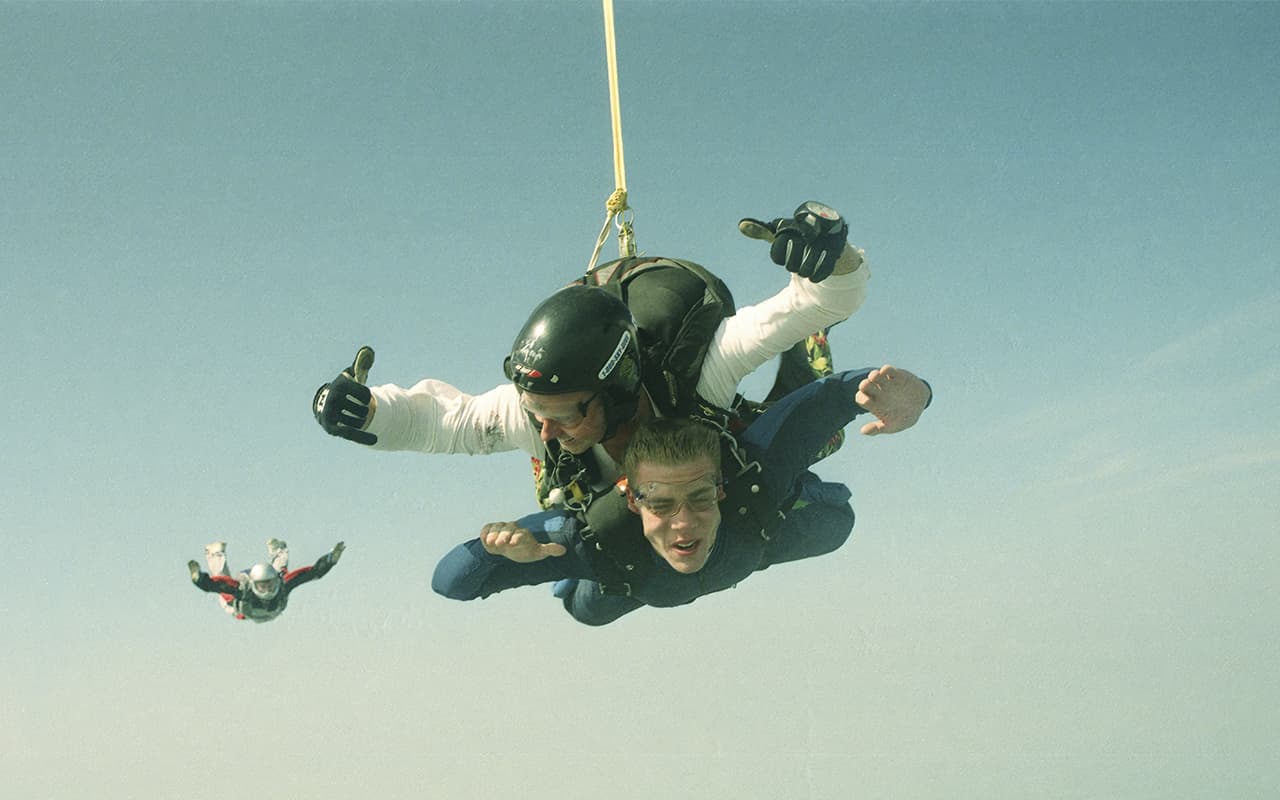Preparing for the first jump takes less than a daylight hours – from 3 to 5 hours. Instructors provide knowledge in a dosed manner – those who are going to jump for the first time will not be frightened by the nuances of getting out of branches and detailed stories about accidents. During the training the future skydiver will learn only the most necessary things – the rules of behavior immediately before, during and after the jump.
Beginners jump with a D-5 type dome parachute. It is practically uncontrollable, but reliable. On training sites there are special simulators – suspended systems with slings, imitating the control of this parachute. In order to learn at least a little to change the movement of the dome, future parachutists have to change the position of their body in the suspended position with the help of slings.
Even the slightest shift in the trajectory of the parachute can significantly facilitate the first contact with the ground after the flight. For example, there is an opportunity to fly towards it not with your back, but sideways.
Landing is taught with special care. The instruction includes jumps from one and a half and two-meter towers. Jump face, side and back. The main rule is that the legs must be fully tensed and bent so that the toes are slightly visible from behind the knees. Of course, there is no chance to stand on your feet when hitting the ground in this case, however, such a landing ensures that there are no injuries. During training, instructors make sure that each jump from the tower ends with a fall on the side – this is how skydiving is properly completed.
D-5 parachutes are much larger than the “wings” that skydivers jump with. This is good for stable flight, but after landing there may be air left in the dome and then it will continue to float on the ground, dragging a properly fallen on the side of the beginner. To avoid this, instructors teach to stop the parachute by sharp pulling of one of the slings to yourself. But, as practice shows, not everyone manages to roll the dome. On the ground, D-5 instructors or concerned companions who landed earlier stop the movement of the parachute.
If a beginner gets confused during the flight and fails to pull the ring, the main parachute will not open. At an altitude of 300 meters, the mechanism for launching the reserve parachute – Z-6p – will be triggered. After the main parachute opens, you need to disconnect the reserve parachute – for convenience it is attached on the abdomen. The mechanism is switched off by pulling the cord. It often happens that beginners forget about the reserve and land on two parachutes.
In the airplane, each parachutist is attached by a belt to special tubes. The instructor unhooks the carabiner just before the jump. Not every “first-timer” can step into the sky, so the instructor often pushes the beginner out himself with a confident movement.
Parachutists take off with instantly opening mini-domes-stabilizers. Free fall lasts no more than 3 seconds, which should be counted by the beginner himself, saying the numbers “521, 522, 523” – each number is one second. Next comes the time to pull the ring. The force that must be applied to make the ring work and the parachute open is 17 kg, but instructors say that everyone pulls, regardless of physical fitness. The next numbers of the “first-timer” – “524, 525” – in 2 seconds after defeating the weight of the ring should open the dome. Upon opening, the dome is pulled sharply upward and opens overhead with a noise. After that there is silence and a few minutes of calm flight.
100 meters to the ground – it’s time to get ready for landing. Of course, no one takes rulers in flight, but it is not difficult to determine this height – as soon as you can distinguish one blade of grass from another – the limit of hundred meters is passed. It’s time to try to correct the dome, group yourself and tense your legs to the limit.
After a successful landing, the new parachutist stands up, straightens to his full height and raises his hand up – the jump is completed. It remains to collect the parachute in a special bag, take it to the warehouse and get a parachutist certificate. There may be several lines in this document. After the first jump only one line will be filled in and it is up to you to decide whether you will remain a “one-time parachutist” or return to the sky.
